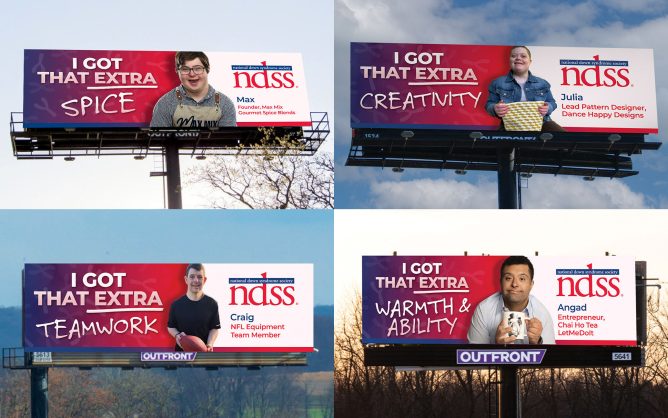1. Consider all customer and employee circumstances
“Think broadly about who may walk—or roll—through your doors,” Tiffany said.
Education is the first step. The term “disability” refers to a diverse group of experiences that are not always obvious. It’s estimated that around 1 in 10 Americans have a condition that could classify as an “invisible disability.”
The ADA guide for small businesses outlines everything business owners should consider to help make employees and customers with disabilities comfortable and welcome, including:
- Are the aisles between tables wide enough for wheelchairs or crutches?
- Is the font size on menus or signs large enough to be legible to people who are visually impaired?
- Do you offer reasonable accommodations for all employees to take advantage of benefits like communal kitchens and break rooms?
“We want to make people feel comfortable immediately,” Tiffany said. “We constantly ask ourselves, ‘What do we need to do to help people enjoy themselves and feel safe?’”
2. Test drive your accommodations
Being intentional with accessibility is important, but there’s one more step: double-checking your work. This step is particularly crucial if you don’t personally identify as disabled. For example, if your business implemented a ramp for employees and customers who use wheelchairs, it’s a good idea to make sure the angle is right by testing it before people use it.
Tiffany had an experience like this of her own—after hiring a service to translate her menu to Braille, she was alerted by multiple blind customers that it was full of mistakes.
“Our Braille menu was completely incorrect,” Tiffany said. “Thank goodness he mentioned it to me because we otherwise would never have known.”
Another customer then offered to convert the menu to accurate Braille. Getting feedback from the community of people you are trying to accommodate is key to reaching your accessibility goals.
3. Prioritize skills-focused hiring practices
Popular hiring practices, like sit-down interviews focused on a question-answer style, can sometimes be culprits for discriminating against neurodivergent candidates and those with nonverbal learning disabilities—people who may struggle to pick up on social cues or have difficulty with visual-spatial skills.
“We use working interviews, where we set the candidate up with a variety of tasks and see what they can do,” Tiffany said. This method helps the hiring manager determine where the candidate would fit best, in addition to evaluating them beyond what they can verbally communicate.
Skills-focused hiring practices are on the rise, according to the Harvard Business Review. Employers that identify talent using demonstrated skills are 60% more likely to successfully hire than those who don’t. Removing barriers to hiring allows a larger, more diverse pool to vie for open positions, benefitting both the hiring manager and candidates who otherwise might not have an opportunity to apply.
4. Embrace disabilities during onboarding
Most organizations already have a standard process for onboarding. Simple additions to prioritize inclusive language make it easier for employees with disabilities to ask for the accommodations they need. Clear communication makes a difference—by proactively discussing the workplace’s commitment to ADA-compliance and options for assistive technology, parking, workspace adaptations, and beyond, you initiate an open dialogue that prioritizes employee comfort.
Additionally, making physical materials accessible during the onboarding process is a detail that sometimes goes overlooked. To help with this, print out things like verbal instructions and video transcripts for those who follow along more easily by reading.
5. Initiate employee resource groups
While typically a more corporate option, employee resource groups (ERGs)—sometimes referred to as business resource groups (BRGs)—can be hugely beneficial for small businesses. If you have enough employees, consider gauging their interest in beginning a dedicated group for discussing identities, giving back to the community, and generally being a voice for change. While ERGs can be formed for any topic, this one’s goal would be to serve as a supportive space where employees can learn about accessibility and inclusion, particularly as it relates to disabilities.
Getting leadership support for ERGs is critical to their success—if you are the business owner, you have the power to propel the group’s mission and give it the resources it needs to flourish.
Start small—a few employees hoping to initiate a dialogue around the topic of choice is more than enough. Over time, it will be necessary to allocate financial resources to support the group’s growing goals, like participating in community-wide volunteer events.
Source: Yelp




